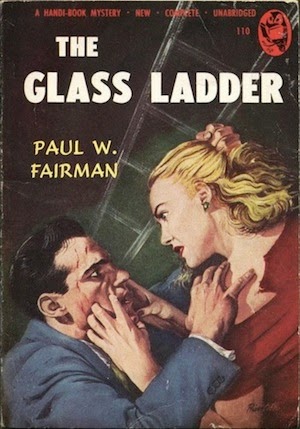A bonus:
Related posts:
A JOURNEY THROUGH CANADA'S FORGOTTEN, NEGLECTED AND SUPPRESSED WRITING
How many women try to keep themselves slim, and when they look like a sheet of paper set up on end, with but the merest suggestion of what could be an attractive pair of rising beauties, when what curves they have are shrouded by grotesque "New Look"clothing, when they can walk down the street looking exactly like almost every other woman, that is, they wear a smug expression, because they think they are beautiful! Gawdallmighty! – how the fashion designers and their partners in misleading 'how to be smart' muck, the dress manufacturers, must smiles they purchase another yacht to set sail for Africa to get away from the horrible shapes they have been instrumental in creating, and to gaze in rapture and admiration upon woman as she was made to be – white, yellow or black!The book is peppered with rants, observations and other asides. The most repeated topic concerns "thought transference". Brace yourself, the narrator has some pretty harsh things to say:
She was thinking. "How wonderfully he rallied after I held his hands for a long time. Perhaps..."Affect him it does! After a long night of handholding, Larry bounces back. The attending doctor, "wise, kind and clever, and a man very much interested in natural methods of healing," is pleasantly surprised. He sees nothing wrong with Larry wolfing down bacon, eggs and coffee with his new bride: "Hurrah!" exclaimed Larry, "our first breakfast together."
She rose and, as before, took both his hands in her soft, warm ones. Then she drew all her inner forces and mental resources together and concentrated her thoughts on one short phrase, "I shall live." Perhaps if she could drive this straight from her brain into his, it would affect him.
Keeping one hand on the wheel, his other reached over and brushed her thigh, then touched the purse which lay in her lap.Object and Access: An extremely fragile mass market paperback. At 159 pages – twelve of which are blank – Soft to the Touch may just be the shortest News Stand Library title. I'm guessing that the unknown cover artist had never seen a photo of Virginia Mayo. I'm certain he'd never seen a naked woman.
 |
| from Queer Chums by Charles H. Eden (London: Society for Promoting Christian Knowledge, n.d.) |
"Mr. Prior's here," somebody answered in haste from the group. "He knows more about poisons and poisoning than almost any other man in all England. He's made a special study of it, as I know. Mr. Prior! Mr. Prior! Come here, you're wanted."Good luck soon comes to outweigh the bad. Prior is not only an expert in poisons, but is the leading authority on curari, the very one used on the arrow. What's more, just days earlier he had received from South America an elixir that may well prove to be an antidote.
 |
| The Terrible Inheritance Grant Allen London: E. & J.B. Young, n.d. |
"I don't know whether my profession makes me think to much of hereditary transmission, and all that sort of thing; but if I were born with a curse like that hanging over me, I'd give up my life entirely to some good for my fellow-men, and expose me least of all to any possible temptation. And I'd never marry."Prior's only hope is that the man he now knows to have been his father was in fact innocent. Through his investigations, he comes to believe that Arthur Flamstead, Lichfield's close friend, was the actual murderer. Who is Arthur Flamstead? Why none other than Sir Arthur himself. "He assumed the name Woolrych instead, by royal warrant, on the death of a distant cousin on his mother's side, from whom he inherited a certain amount of property," explains Lady Woolrych.
 |
| Advert for Monkey Brand Soap featured in the E. & J.B. Young edtion |
The Dusty Bookcase:A Journey Through Canada'sForgotten, Neglected, and Suppressed Writing
 |
| Carnival of Love [Mardi Gras Madness] Anthony Scott New York: Red Circle, 1949 Cover by Ray Johnson |
 |
| Carnival of Love [Mardi Gras Madness] Anthony Scott Toronto: News Stand Library, 1950 Cover by Syd Dyke |
 |
| The Glass Ladder Paul W. Fairman New York: Handi-Books, 1950 Cover artist unknown |
 |
| The Glass Ladder Paul W. Fairman Toronto: Harlequin, 1951 Cover artist unknown |

